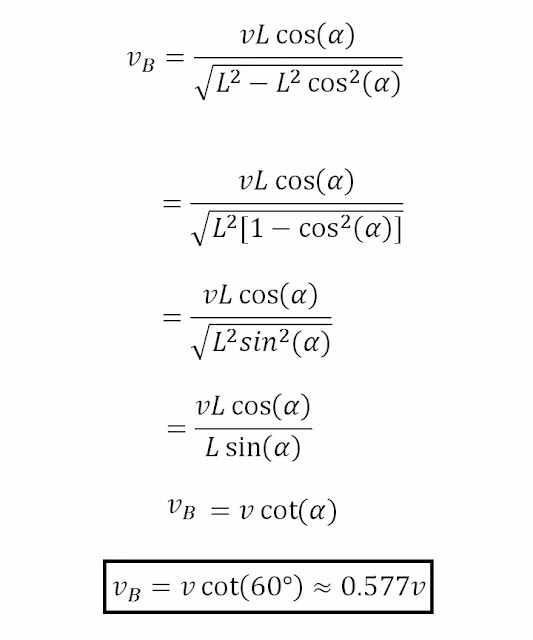Usually I'll solve something and realize that it wasn't that bad, but I still think this is hard...sort of.
Start out by drawing a diagram of the particle sliding down a ramp or incline. This is just to give an idea of what we're dealing with. The arrow I've drawn indicates the direction of the particle's motion.
As the particle moves down the plane, it experiences a displacement in the direction of the ramp denoted by delta z; however, we are interested in the horizontal displacement. We will break up the displacement vector delta z into a horizontal and vertical component denoted by delta x and delta z respectively. Now we should be able to write an equation of the horizontal displacement in terms of delta z and theta.
Keep this equation in mind because we will use it later. Right now we will focus on writing the displacement of the particle in the direction of the plane (or in the direction of delta z) in terms of the change in time and the angle theta.
Now this is where the equation above comes in: Once we figure out and equation for the displacement in the delta z direction , we will multiply the whole thing by cos(theta) to obtain an expression of the displacement in the horizontal (delta x) direction.
Also Recall from the acceleration diagram that the acceleration in the direction of the plane is equal to g*sin(theta). This is what we'll use in our kinematics equation.
we have now written the horizontal displacement in terms of theta and the change in time.
Want we want to know is what angle of inclination will cause a certain horizontal displacement in a minimum amount of time. In other words, for what angle does the particle experience the greatest displacement?
It may have struck you that this problem becomes similar to finding the relative maximum of a function. It almost is. The tricky thing here is that the equation is in terms of two variables, not one.
In this case when we solve for the relative maximum of the equation, we will treat the change in time as a constant and differentiate the horizontal displacement with respect to the angle theta. If you think about it, the change in time is really irrelevant in this situation because it's not what causes a change in the vector components of the particle's acceleration. We are interested in the variable that causes a direct change in the particle's acceleration components, so we differentiate with respect to theta.
Now that we have the angle that will cause a horizontal displacement in a minimum amount of time, we simply plug it back into the original equation (the one we differentiated) and solve for delta t.

















































